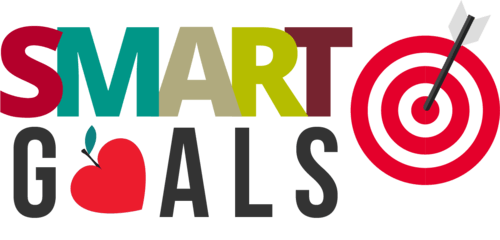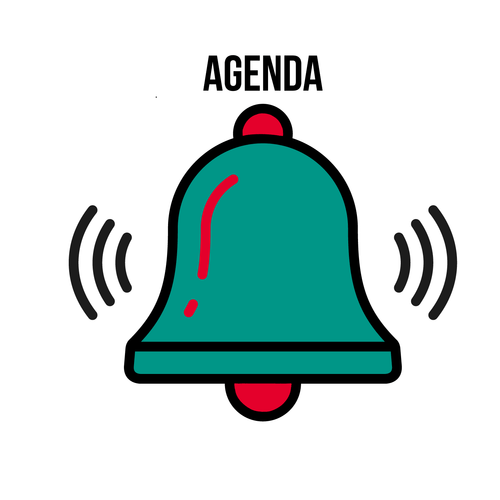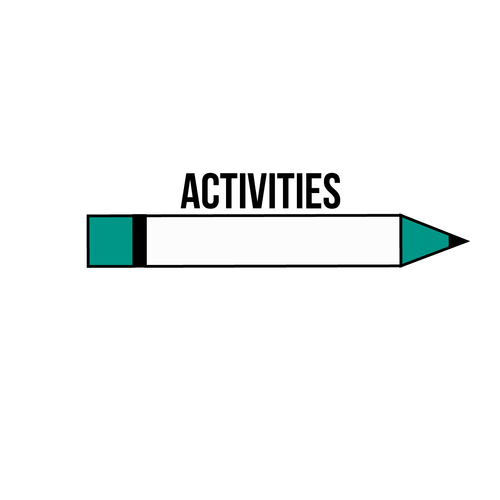3.4: Mighty Macronutrients
- Page ID
- 2415
\( \newcommand{\vecs}[1]{\overset { \scriptstyle \rightharpoonup} {\mathbf{#1}} } \)
\( \newcommand{\vecd}[1]{\overset{-\!-\!\rightharpoonup}{\vphantom{a}\smash {#1}}} \)
\( \newcommand{\id}{\mathrm{id}}\) \( \newcommand{\Span}{\mathrm{span}}\)
( \newcommand{\kernel}{\mathrm{null}\,}\) \( \newcommand{\range}{\mathrm{range}\,}\)
\( \newcommand{\RealPart}{\mathrm{Re}}\) \( \newcommand{\ImaginaryPart}{\mathrm{Im}}\)
\( \newcommand{\Argument}{\mathrm{Arg}}\) \( \newcommand{\norm}[1]{\| #1 \|}\)
\( \newcommand{\inner}[2]{\langle #1, #2 \rangle}\)
\( \newcommand{\Span}{\mathrm{span}}\)
\( \newcommand{\id}{\mathrm{id}}\)
\( \newcommand{\Span}{\mathrm{span}}\)
\( \newcommand{\kernel}{\mathrm{null}\,}\)
\( \newcommand{\range}{\mathrm{range}\,}\)
\( \newcommand{\RealPart}{\mathrm{Re}}\)
\( \newcommand{\ImaginaryPart}{\mathrm{Im}}\)
\( \newcommand{\Argument}{\mathrm{Arg}}\)
\( \newcommand{\norm}[1]{\| #1 \|}\)
\( \newcommand{\inner}[2]{\langle #1, #2 \rangle}\)
\( \newcommand{\Span}{\mathrm{span}}\) \( \newcommand{\AA}{\unicode[.8,0]{x212B}}\)
\( \newcommand{\vectorA}[1]{\vec{#1}} % arrow\)
\( \newcommand{\vectorAt}[1]{\vec{\text{#1}}} % arrow\)
\( \newcommand{\vectorB}[1]{\overset { \scriptstyle \rightharpoonup} {\mathbf{#1}} } \)
\( \newcommand{\vectorC}[1]{\textbf{#1}} \)
\( \newcommand{\vectorD}[1]{\overrightarrow{#1}} \)
\( \newcommand{\vectorDt}[1]{\overrightarrow{\text{#1}}} \)
\( \newcommand{\vectE}[1]{\overset{-\!-\!\rightharpoonup}{\vphantom{a}\smash{\mathbf {#1}}}} \)
\( \newcommand{\vecs}[1]{\overset { \scriptstyle \rightharpoonup} {\mathbf{#1}} } \)
\( \newcommand{\vecd}[1]{\overset{-\!-\!\rightharpoonup}{\vphantom{a}\smash {#1}}} \)
\(\newcommand{\avec}{\mathbf a}\) \(\newcommand{\bvec}{\mathbf b}\) \(\newcommand{\cvec}{\mathbf c}\) \(\newcommand{\dvec}{\mathbf d}\) \(\newcommand{\dtil}{\widetilde{\mathbf d}}\) \(\newcommand{\evec}{\mathbf e}\) \(\newcommand{\fvec}{\mathbf f}\) \(\newcommand{\nvec}{\mathbf n}\) \(\newcommand{\pvec}{\mathbf p}\) \(\newcommand{\qvec}{\mathbf q}\) \(\newcommand{\svec}{\mathbf s}\) \(\newcommand{\tvec}{\mathbf t}\) \(\newcommand{\uvec}{\mathbf u}\) \(\newcommand{\vvec}{\mathbf v}\) \(\newcommand{\wvec}{\mathbf w}\) \(\newcommand{\xvec}{\mathbf x}\) \(\newcommand{\yvec}{\mathbf y}\) \(\newcommand{\zvec}{\mathbf z}\) \(\newcommand{\rvec}{\mathbf r}\) \(\newcommand{\mvec}{\mathbf m}\) \(\newcommand{\zerovec}{\mathbf 0}\) \(\newcommand{\onevec}{\mathbf 1}\) \(\newcommand{\real}{\mathbb R}\) \(\newcommand{\twovec}[2]{\left[\begin{array}{r}#1 \\ #2 \end{array}\right]}\) \(\newcommand{\ctwovec}[2]{\left[\begin{array}{c}#1 \\ #2 \end{array}\right]}\) \(\newcommand{\threevec}[3]{\left[\begin{array}{r}#1 \\ #2 \\ #3 \end{array}\right]}\) \(\newcommand{\cthreevec}[3]{\left[\begin{array}{c}#1 \\ #2 \\ #3 \end{array}\right]}\) \(\newcommand{\fourvec}[4]{\left[\begin{array}{r}#1 \\ #2 \\ #3 \\ #4 \end{array}\right]}\) \(\newcommand{\cfourvec}[4]{\left[\begin{array}{c}#1 \\ #2 \\ #3 \\ #4 \end{array}\right]}\) \(\newcommand{\fivevec}[5]{\left[\begin{array}{r}#1 \\ #2 \\ #3 \\ #4 \\ #5 \\ \end{array}\right]}\) \(\newcommand{\cfivevec}[5]{\left[\begin{array}{c}#1 \\ #2 \\ #3 \\ #4 \\ #5 \\ \end{array}\right]}\) \(\newcommand{\mattwo}[4]{\left[\begin{array}{rr}#1 \amp #2 \\ #3 \amp #4 \\ \end{array}\right]}\) \(\newcommand{\laspan}[1]{\text{Span}\{#1\}}\) \(\newcommand{\bcal}{\cal B}\) \(\newcommand{\ccal}{\cal C}\) \(\newcommand{\scal}{\cal S}\) \(\newcommand{\wcal}{\cal W}\) \(\newcommand{\ecal}{\cal E}\) \(\newcommand{\coords}[2]{\left\{#1\right\}_{#2}}\) \(\newcommand{\gray}[1]{\color{gray}{#1}}\) \(\newcommand{\lgray}[1]{\color{lightgray}{#1}}\) \(\newcommand{\rank}{\operatorname{rank}}\) \(\newcommand{\row}{\text{Row}}\) \(\newcommand{\col}{\text{Col}}\) \(\renewcommand{\row}{\text{Row}}\) \(\newcommand{\nul}{\text{Nul}}\) \(\newcommand{\var}{\text{Var}}\) \(\newcommand{\corr}{\text{corr}}\) \(\newcommand{\len}[1]{\left|#1\right|}\) \(\newcommand{\bbar}{\overline{\bvec}}\) \(\newcommand{\bhat}{\widehat{\bvec}}\) \(\newcommand{\bperp}{\bvec^\perp}\) \(\newcommand{\xhat}{\widehat{\xvec}}\) \(\newcommand{\vhat}{\widehat{\vvec}}\) \(\newcommand{\uhat}{\widehat{\uvec}}\) \(\newcommand{\what}{\widehat{\wvec}}\) \(\newcommand{\Sighat}{\widehat{\Sigma}}\) \(\newcommand{\lt}{<}\) \(\newcommand{\gt}{>}\) \(\newcommand{\amp}{&}\) \(\definecolor{fillinmathshade}{gray}{0.9}\)
National Health Education Standards (NHES)
- 1.12.5 Predict how healthy behaviors, such as consuming macronutrients, affects health status.
- 7.12.2 Demonstrate a variety of healthy behaviors, such as consuming macronutrients, to maintain or improve the health of self and others.
Wellness Guidelines
- Increase fruit and vegetable consumption

- Instruction: In a group or think-pair-share format, have participants discuss following questions. Acknowledge those who have progressed towards their goal(s) and encourage anyone who wants to change or modify their goal to get 1:1 support.
- Share: Let’s discuss our SMART Goals.
- How is it going with your current SMART goal?
- What are some ways you can improve progress towards your goal? (Grows)
- What are some ways you are doing well with progress towards your goal? (Glows)
GUIDELINE: Increase Fruit and Vegetable Consumption
- Share: What guideline do you think is related to today’s lesson? Who has a SMART Goal related to this guideline?
- Instruction: Select one activity.
- Guideline Popcorn: The group lists all 8 guidelines rapidly in popcorn format.
- Guideline Charades: Divide participants into groups and assign each a guideline. Each group has to silently act out the guideline for the rest to guess.
- Two Truths and One Lie:
- Truth 1: A healthy source of carbohydrates is carrots.
- Truth 2: Protein can come from both plant and animal sources.
- Lie: To be healthy, you cannot eat any fat.
- Share: Fat is essential for providing your body with energy and supporting other functions of your body. However, some fat sources are healthier than others. For example, walnuts, salmon, and avocado are healthy sources of fat. Also, eating vegetables and fruits do not just help your body gain vitamins and fiber. Carrots and starchy vegetables can also serve as healthy sources of carbohydrates!
- Questions to discuss and/or journal:
- What are common kinds of carbohydrates that you eat? Why?
- What are common kinds of proteins that you eat? Why?
- What are common kinds of fat that you eat? Why?

- How macronutrients benefit your body and what food sources contain macronutrients.

- Worksheets
- Slide presentation
- Extra-large nutrition label
- Bread (carbohydrate example)
- Egg (protein example)
- Olive oil (fat example)
- Red Sign - Fats
- Green Sign - Carbohydrates
- Yellow Sign - Proteins
- Processed peanut butter and natural peanut butter
- Bulb baster(s)
- Red dye
- A vegetable shortening & olive oil
- 2 clear bowls
- Water

[As defined by USDA & HHS, 2015; Harvard School of Public Health, 2017; FDA, n.d.; Coffman, n.d.; Hellesvig-Gaskell, 2015]
- Macronutrients: A dietary component that provides energy. Macronutrients include protein, fats, carbohydrates, and alcohol.
- Carbohydrate: One of the macronutrients and a source of energy. They include sugars, starches, and fiber. They provide your body with the energy to move, digest your food and maintain organ function.
- Protein: One of the macronutrients and a major functional and structural component of every animal cell. It provides your body with the energy for your muscles and tissues to grow and heal and keeps your immune system strong.
- Fat: One of the macronutrients and a source of energy. It provides your body with energy, helps your body absorb vitamins and other nutrients, and cushions your organs.
- Hydrogenated: A term that describes food produced by hydrogenation, a process that turns a liquid fat, such as vegetable oil into a semi-solid, more shelf-stable fat, such as margarine.

- Do Now
- What are macronutrients?
- The Three Types of Fat
- Macronutrient Showdown
- Exit Ticket

Do Now:
- Instruction:
- Have the group split into think-pair-share groups and list off as many foods and drinks they can think of, that contain carbohydrates, protein, and fat in a mad minute. They get one minute to for each macronutrient.
- oAt the end of the three (3) minutes, groups will count how many they have listed for each category. The group with the most items wins.
- Share:
- We are going to learn more about what each macronutrient is and in which foods and drinks can you find these macronutrients.
- How do you determine what macronutrients a food contains? The nutrition label.
Good to Know: What are Macronutrients?
- • Share:
- Why do we need to know what macronutrients are? Because they are the nutrients that provide our body energy and we need them in larger amounts than other nutrients (USDA & HHS, 2015). The prefix “macro” refers to big things, as opposed to “micro” that refers to little things.
- You’ve all probably heard of protein, carbohydrate, and fat. But does anyone really know what these terms mean?
- We already know that a balanced diet with plenty of essential nutrients is a major part of being healthy. But, we also need to know how much of each nutrient to eat and how to choose the best foods from each nutrient category.
- Let’s explore what the three different macronutrients do for your body and where we can find them in our food.
- Carbohydrate (the GO nutrient): One of the macronutrients and a source of energy. They include sugars, starches, and fiber (USDA & HHS, 2015). They provide your body with the energy to move, digest your food and maintain organ function (Harvard School of Public Health, 2017). They come in two forms: simple (sugar) and complex (starches and fiber). We want to avoid simple carbohydrates and eat complex ones instead because they give us energy over a longer period of time.
- There are 4 calories per gram of carbohydrate (Institute of Medicine, 2005). One slice of bread has 15 grams of carbohydrates. That’s 60 calories from carbohydrate. A slice of bread also has 1 gram of fat (9 calories per gram) and 3 grams of protein (4 calories per gram/total of 12 calories). The total calories in the slice of bread would be 81 calories. Optional: show the group a piece of bread and use exact macronutrient content.
- Healthiest sources of simple carbohydrates: natural sugars such as fructose in fruit, lactose in milk. The least healthy sources are sugary drinks, desserts, candies and other sweets. Healthiest sources of complex carbohydrates: whole grains (bread, tortillas, rice, pasta), oats, corn, beans, peas, potatoes, carrots, starchy vegetables. The least healthy sources are refined grains (white bread, rice, pasta).
- Protein (the GROW nutrient): One of the macronutrients and a major functional and structural component of every animal cell (USDA & HHS, 2015). It provides your body with the energy for your muscles and tissues to grow and heal and keeps your immune system strong (FDA, n.d.). It is found in both animal and plant sources.
- There are 4 calories per gram of protein (Institute of Medicine, 2005). One egg has 6 grams of protein. That egg has 24 calories of protein. It also has 5 calories per gram of fat which totals to 45 calories of fat. In total it has 69 calories with both protein and fat. Optional: show the group an egg.
- Healthiest animal protein sources: seafood, meat, poultry, eggs, and milk & dairy products
- Healthiest plant protein sources: beans & peas, nuts, seeds, and soy products.
- Not as healthy sources: red meats-pork/beef (because of high cholesterol/sodium), whole milk/yogurt
- Fat (the CARGO nutrient): One of the macronutrients and a source of energy (USDA & HHS, 2015). Fat is important for building the vessels that transport nutrients throughout your body. It also helps your body absorb vitamins and other nutrients and cushions your organs. It is found in both animal and plant sources.
- There are 9 calories per gram of fat (Institute of Medicine, 2005). One tablespoon of olive oil has 14 grams of fat. The tablespoon of oil has 126 calories. Optional: show the group a tablespoon of olive oil.
- Healthiest fat sources: fish and its oils, lean meats, nuts, plant oils
- Not as healthy sources: butter, vegetable shortening (a fat that is solid at room temperature and is commonly found in pastries)
- Optional Instruction:
- In addition to verbally sharing this information, you may choose to play the following video for participants: https://www.youtube.com/watch?v=cKRf53I737E
- Share:
- The proportion of your diet each macronutrient should take depends on your age and gender. Let’s do a quick overview of the numbers:
| Carbohydrates | Protein | Fat | |
| Young Children (1-3) | 45-65% | 5-20% | 30-40% |
| Children and Adolescents (4-18) | 45-65% | 10-30% | 25-35% |
| Adults (19 and older) | 45-65% | 10-35% | 20-35% |
- Source: U.S. Department of Agriculture & U.S Department of Health and Human Services. (2010). Dietary Guidelines for Americans. Retrieved From: https://health.gov/dietaryguidelines...elines2010.pdf
Real World Relevance: The Three Types of Fat
- Share:
- There are three types of fat: (1) unsaturated from plant sources (2) saturated from animal sources and (3) trans-saturated from processed sources.
- Trans-saturated fats are formed through a process called hydrogenation that turns a liquid fat, such as vegetable oil, into a semi-solid, more shelf-stable fat, such as margarine.
- Most oils are only partially hydrogenated, which creates harmful trans fats that can raise cholesterol (Harvard School of Public Health, 2017).
- Instruction:
- Fill a clear bowl with water and red food dye to symbolize blood. Use a large baster to help facilitate the demonstration. The bulb is the heart, and the plastic tube is the blood vessels.
- Pour olive oil into the water.
- Suction up some water in bulb baster. Repeat to illustrate that the heart can still pump blood easily with unsaturated fat in veins.
- Put a vegetable shortening (a fat that is solid at room temperature and is commonly found in pastries) in water (and a small amount in bulb baster) and try to suction up some water into the bulb baster.
- Illustrate how the heart has difficulty pumping blood with saturated (and trans) fat in veins.
- Share:
- What happens after prolonged exposure to these unhealthy fats? The heart can fail from the blockage. This is commonly known as a “heart attack.”
- Most fats with a high percentage of saturated or trans fatty acids are solid at room temperature and are referred to as “solid fats,” while those with more unsaturated fatty acids are usually liquid at room temperature and are referred to as “oils” (USDA & HHS, 2015).
- Instruction:
- Hold up processed vs. natural peanut butter and explain how natural peanut butter has liquid (peanut oil) on top. Just stir it to demonstrate!
- Have participants complete fill-in-the-blanks on the worksheet. Review the correct answers aloud:
- Plant sources are high in unsaturated fat.
- Animal sources are high in saturated fat.
- Trans-saturated fat comes from processed sources.
Hands-On: Macronutrient SHOWDOWN!
- Set Up:
- Pass out a sheet of green, yellow, and red paper to each person or small group.
- Instruction:
- GREEN represents CARBS, YELLOW represents PROTEIN, RED represents FAT.
- Share:
- I’m going to read a prompt, and your job is to guess which macronutrient this prompt is talking about. The first person/group to raise the correct color gets a point.
Macronutrients SHOWDOWN Prompts
CARBOHYDRATES
| This macronutrient can be broken down into simple sugars. | Your body can turn this macronutrient to glucose, which is fuel for your cells. |
|
A form of this macronutrient (called fiber) can keep your intestines healthy and help with the body’s waste removal (Harvard School of Public Health, 2017). |
This macronutrient is your body’s preferred source of energy. |
|
Beans are an excellent source of a slowly-digested form of this macronutrient (Harvard School of Public Health, 2017). |
Healthiest sources of this macronutrient often contain many vitamins that promote good health (Harvard School of Public Health, 2017). |
|
Many people classify this macronutrient as good or bad, simple or complex. |
Starchy vegetables, broccoli, and carrots are healthy sources of this macronutrient. |
|
After a workout, this nutrient is needed to replace the energy burned. |
Processed macronutrients of this type are not good for you, but the whole ones are (Harvard School of Public Health, 2017). |
|
Your body needs more of this macronutrient for energy than any other. |
Brown rice is a healthy source of this macronutrient. |
|
This macronutrient keeps your organs working. |
This is the “GO macronutrient” - it helps your body move. |
|
Pears and almost all fruits and veggies are healthy sources of this nutrient. |
Cookies and cakes are unhealthy sources of this macronutrient. |
|
Your brain uses these macronutrients for energy. |
Sugar is a refined type of this macronutrient. |
PROTEIN
|
This macronutrient is found throughout the body—in muscle, bone, skin, hair, and virtually every other body part or tissue (Harvard School of Public Health, 2017). |
Vegetarians are at a greater risk of not getting enough of this macronutrient. |
|
This nutrient can be found in animal and plant sources. |
After a workout, this macronutrient is needed to help repair the muscle tissues. |
|
It requires more energy to digest this nutrient than carbohydrates (Godman, 2013). |
Without this macronutrient, you would have no hair (Coleman, n.d.). |
|
A type of this macronutrient (antibody) helps to keep your immune system strong (Rhoades & Pflanzer, 2002). |
Beans are a healthy source of this nutrient. |
|
This nutrient is the “GROW macronutrient.” |
Your skin, hair, and nails need this macronutrient to grow. |
|
Males between the ages 14-18 need about 52 grams per day of this macronutrient. Females between the ages of 14-18 need about 46 grams per day (USDA & HSS, 2010). |
Contrary to popular belief, this nutrient is not ONLY found in meat. |
|
This macronutrient helps to heal your body (FDA, n.d.). |
Not consuming enough of this macronutrient can cause growth failure, loss of muscle mass, decreased immunity, weakening of the heart and respiratory system (Harvard School of Public Health, 2017). |
|
This macronutrient is a building block for our muscles, bones, skin, hair, and blood (Nelse, 2002). |
Eating enough of this macronutrient will help keep you from getting sick (Annigan, n.d.). |
|
Peanut butter is a healthy source of this macronutrient. |
Chicken and turkey are a healthy source of this macronutrient. |
FAT
|
This macronutrient is the starting point to make estrogen, testosterone, vitamin D, and other vital compounds (Brown, 2013). |
Your brain is about 60% of this type of macronutrient (Chang, Ke, & Chen, 2009). |
|
This macronutrient protects the walls of your cells (Brown, 2013). |
This macronutrient cushions your organs (Brown, 2013). |
|
Healthy forms of this macronutrient do not necessarily make you fat (Estruch et al., 2016). |
This nutrient is the “CARGO macronutrient.” |
|
Olive oil is a healthy example of this macronutrient. |
It is recommended that the diets of teenagers between the ages of 14-18 consist of about 25-35% of this macronutrient in their daily diet (USDA & HSS, 2010). |
|
This macronutrient allows your body to absorb Vitamins A, D, E and K from foods that you eat (WebMD, 2004). |
Walnuts, salmon, and avocado are healthy sources of this macronutrient. |
|
Omega 3 Fatty Acids (“Omega 3s”) are antioxidants made from this macronutrient that has been shown to reduce inflammation and may lower risk of chronic diseases such as heart disease (University of Maryland Medical Center, 2015). |
There are three types of this macronutrient: trans, saturated (unhealthy—primarily from animals) and unsaturated (healthy—primarily from plants) (Brown, 2013). |
Bibliography
- Annigan, J. (n.d.). Does Protein Help Rebuild Muscle Tears? Retrieved From: healthyeating.sfgate.com/protein-rebuild-muscle-tears-6731.html
- Brown, JE. (2013). Nutrition Now (7th ed.) Boston, MA: Cengage Learning.
- Chan, CY, Ke, DS., & Chen, JW. (2009). Essential fatty acids and human brain. Acta. Neurol. Taiwan 18(4): 231-41.
- Coffman, MA. (n.d.) Three Functions of Fat in the Body. Retrieved From: http://healthyeating.sfgate.com/thre...body-3402.html
- Coleman, E. (n.d.) Does Protein Help You Get Thick Hair? Retrieved From: http://healthyeating.sfgate.com/prot...air-12037.html
- Estruch, R., et al. (2016). Effect of a high-fat Mediterranean diet on body weight and waist circumference: a pre-specified secondary outcomes analysis of the PREDIMED randomized controlled trial. The Lancet Diabetes & Endocrinology 5(9): 669-756.
- US Food & Drug Administration. (n.d.). Protein. Retrieved From: www.accessdata.fda.gov/scrip...ts/Protein.pdf .
- Godman, H. (2013). Extra Protein is a decent dietary choice but doesn’t overdo it. Harvard Health Publications. Retrieved From: https://www.health.harvard.edu/blog/...t-201305016145
- Harvard School of Public Health. (n.d.). Carbohydrates. Retrieved From: https://www.hsph.harvard.edu/nutritionsource/carbohydrates/
- Harvard School of Public Health. (n.d.). Fiber. Retrieved From: https://www.hsph.harvard.edu/nutriti...ydrates/fiber/
- Harvard School of Public Health. (n.d.). Protein. Retrieved From: https://www.hsph.harvard.edu/nutritionsource/what-should-you-eat/protein/
- Harvard School of Public Health. (n.d.). Types of Fat. Retrieved From: https://www.hsph.harvard.edu/nutriti.../types-of-fat/
- Hellesvig-Gaskell, K. (2015). Hydrogenated Oil Definition. Retrieved From: http://www.livestrong.com/article/40...vegetable-oil/
- Nelse, ME. (2002). Will Eating More Protein Help Your Body Gain Muscle? Retrieved From: http://www.webmd.com/fitness-exercis...uscle-faster#1
- Institute of Medicine. (2005). Dietary Reference Intakes for Energy, Carbohydrate. Fiber, Fat, Fatty Acids, Cholesterol, Protein and Amino Acids. Retrieved From: https://www.nap.edu/read/10490/chapter/12
- Train with Kane. (2015). Basic Nutrition and Macro-Nutrients. Retrieved From: https://www.youtube.com/watch?v=cKRf53I737E
- Rhoades, RA & Pflanzer, RG. (2002). Human Physiology (4th ed.). Thomson Learning. p. 584.
- U.S. Department of Agriculture & U.S Department of Health and Human Services. (2015). Dietary Guidelines for Americans. Retrieved From: https://health.gov/dietaryguidelines...Guidelines.pdf
- University of Maryland Medical Center. (2015.) Omega-3 fatty acids. Retrieved From: http://www.umm.edu/health/medical/altmed/supplement/omega3-fatty-acids
- For additional information to include in this lesson, you can consider: https://www.youtube.com/watch?v=tv5Lxw0k56A
- For an additional activity to include in this lesson, you can consider: https://www.youtube.com/watch?v=23Lt8P7J1S0&list=PLY05JxZoSB3sjJTD0mr3Ys3ZUbg-bAexf&index=5
- TED-Ed. (2016). How do carbohydrates impact your health? - Richard J. Wood. Retrieved From: https://www.youtube.com/watch?v=wxzc_2c6GMg
- TED-Ed. (2013). What is fat? – George Zaidan. Retrieved From: https://www.youtube.com/watch?v=QhUrc4BnPgg
This lesson was created in partnership with Albert Einstein College of Medicine Department of Epidemiology and Population Health with funding support by the National Institutes of Health NIDDK Grant R01DK097096.


